December 13, 2022
Today in MSFS I’m checking out a rather odd bird called the EA-7 Edgley Optica, and I’m doing it at the location where it was developed, Old Sarum Airfield near Salisbury in southwest England.
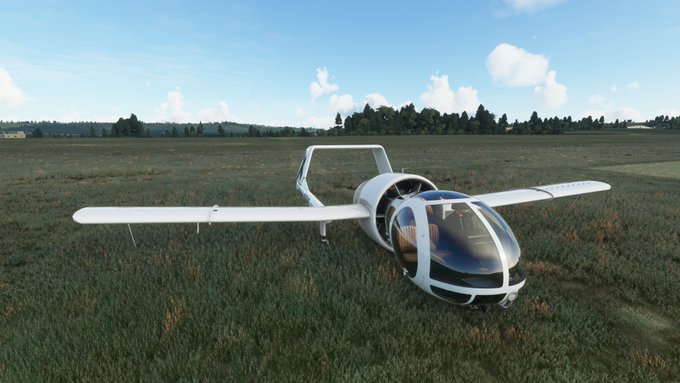
The Optica is the brainchild of British designer John Edgley, who envisioned it in the 1970s as a slow-flying alternative for many tasks now performed by helicopters.
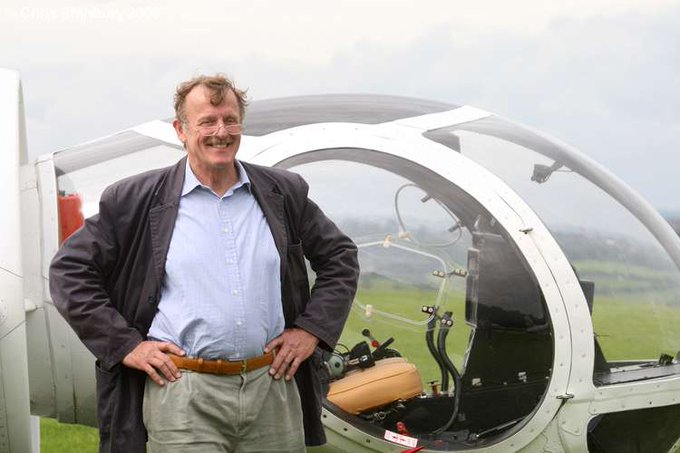
The cockpit, which stretches forward of the powerplant and wings, gives the occupants clear 270-degree visibility much like a helicopter.
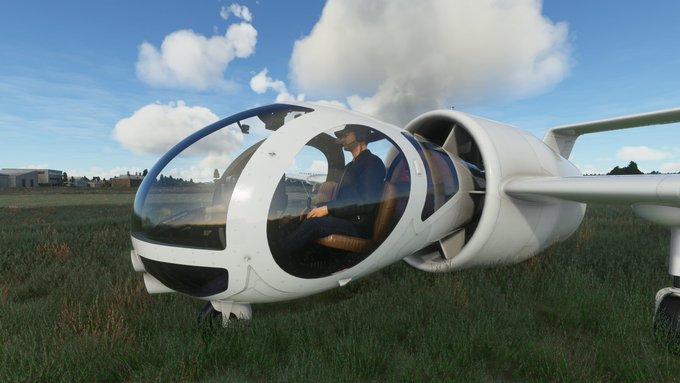
Behind the cockpit is a 6-cylinder 260hp engine – similar but larger than the 4-cylinder 180hp kind found in a Cessna 172 – that turns a large but relatively quiet fan.
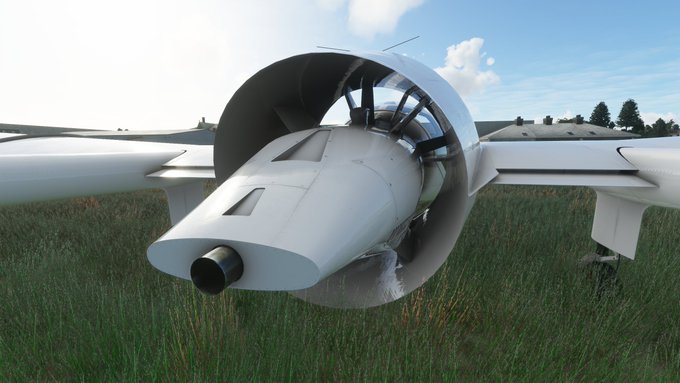
Everything about this aircraft is a bit unusual, including its tail and dual rudders.
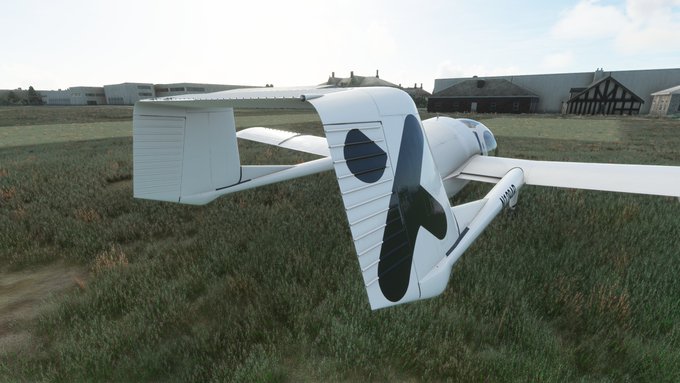
People who’ve seen an Edgley Optica often compare it to a bug or a dragonfly.
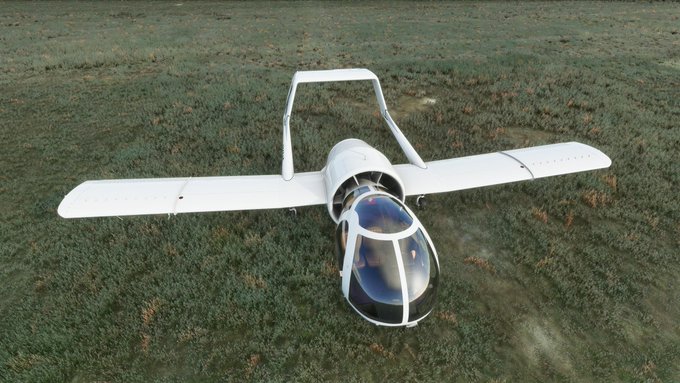
Inside, the cockpit layout really looks like that of a helicopter – though the instruments and controls are, in fact, those of a conventional airplane.
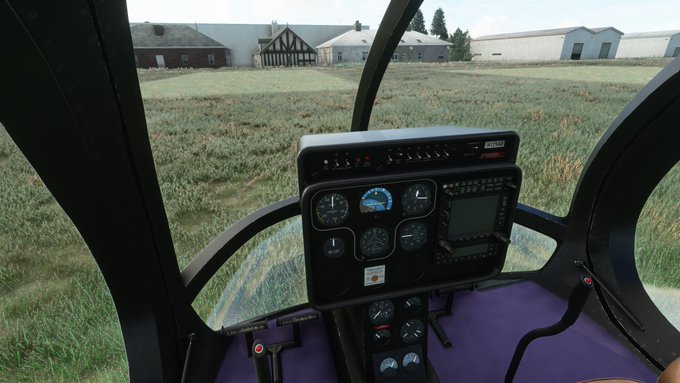
The fan isn’t adjustable, so there’s no blue lever, just a throttle and a mixture control, along with the trim, flaps, and fuel cutoffs. Since these are all on the right, if you’re sitting in the main pilot’s seat, you hold the stick with your left hand.
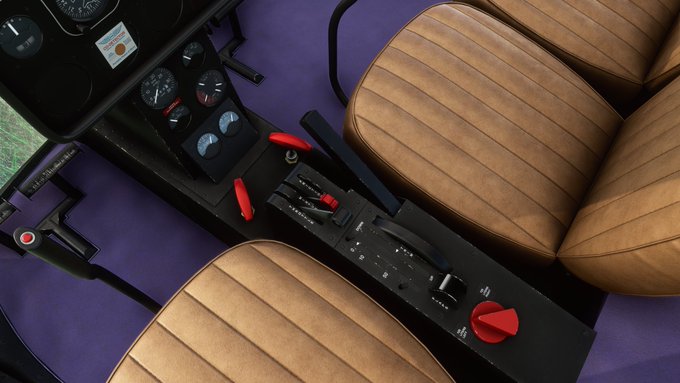
Here’s the view of the fan behind us, with the first aid kit just in case.
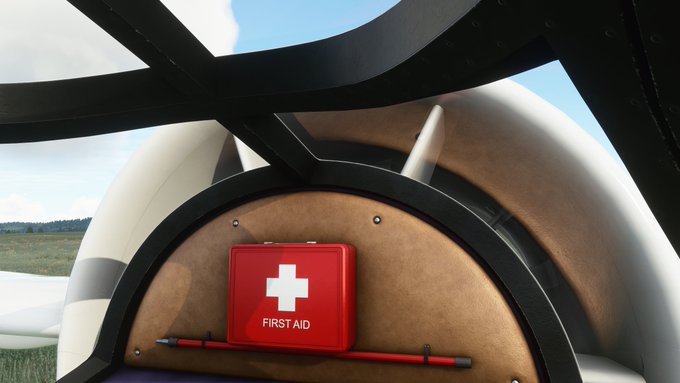
Front and overhead is a magnetic compass, a clock, a weight-and-balance warning system, and a fire extinguisher.
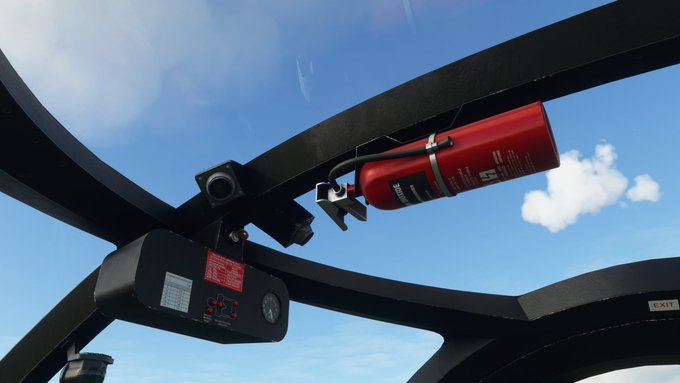
I’ve taxied out the grass runway at Old Sarum and am ready to take off.
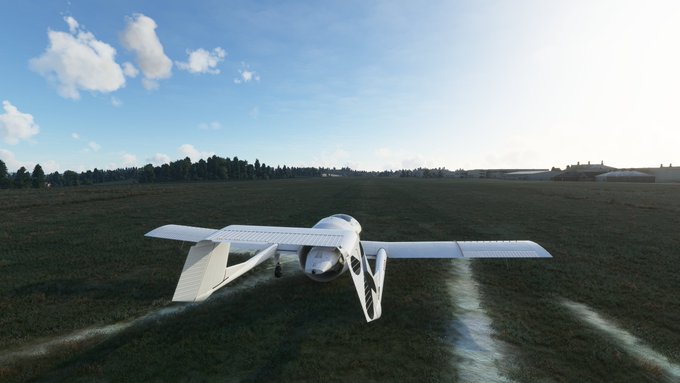
Both the takeoff and landing speed is just shy of 60 knots. Just as I take off, the hilltop ruins of Old Sarum itself come into view, straight ahead.
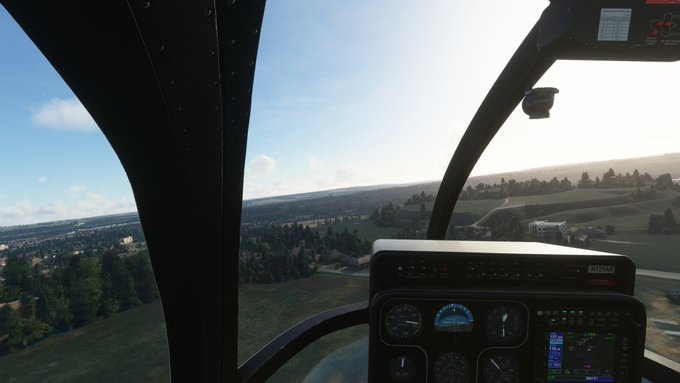
Old Sarum was an Iron Age hill fort, which later became a town and castle in the Middle Ages.
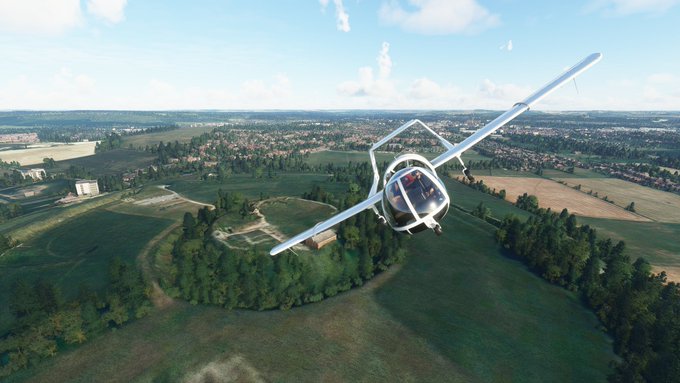
Here’s what Old Sarum looked like in its heyday. It even had its own cathedral and bishop. In the 1100s, Queen Eleanor (of Aquitaine) was kept under house arrest here, for several years, by her husband King Henry II after she helped their sons rebel against him.
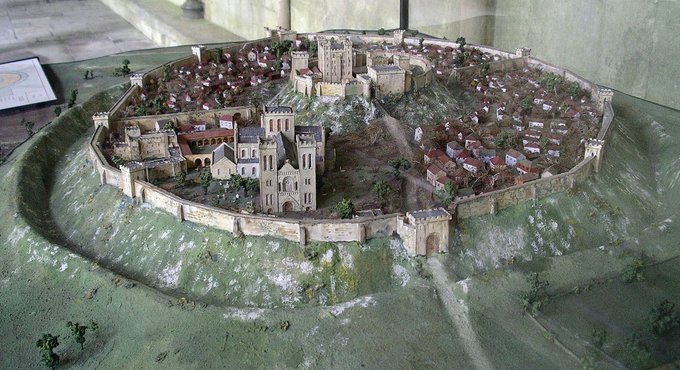
From higher up you can clearly see the outline of the settlement, including the foundations of the cathedral and castle. You can also see the grass airfield to the east (right).
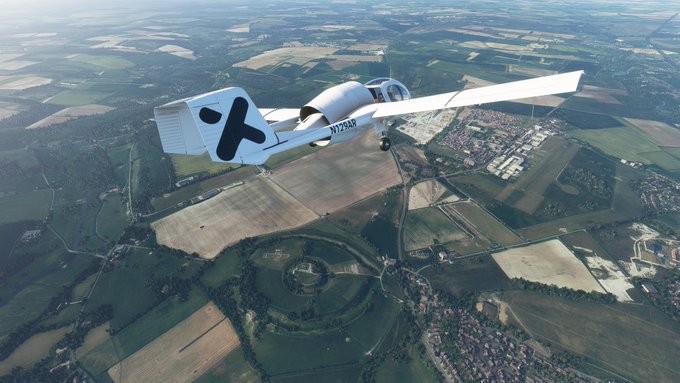
In the early 1200s, the confined space and lack of water caused the bishop to relocate the cathedral to the plain a short distance south – which became the town of Salisbury. (The Optica’s landing gear are fixed, by the way – I haven’t forgotten to raise them).
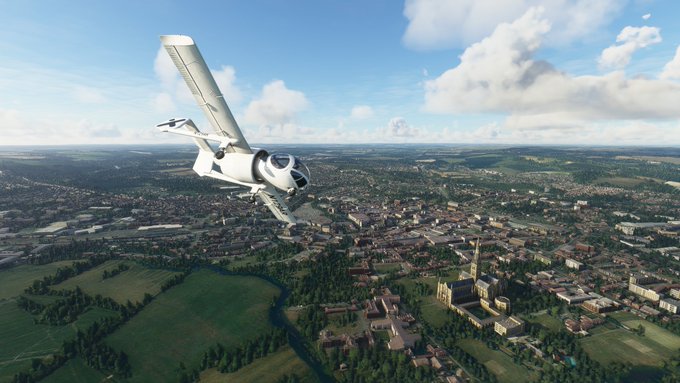
The spire of Salisbury Cathedral is 404 feet tall, making it the tallest church in the United Kingdom. It is also home to the best preserved of the four copies of the Magna Carta.
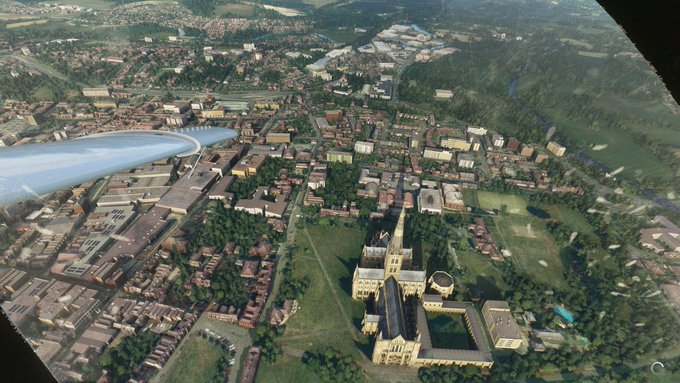
Old Sarum, just to its north, withered into ruins – but, notoriously, its handful of residents retained a seat in Parliament, making it a prime example of what was called a “rotten borough”.
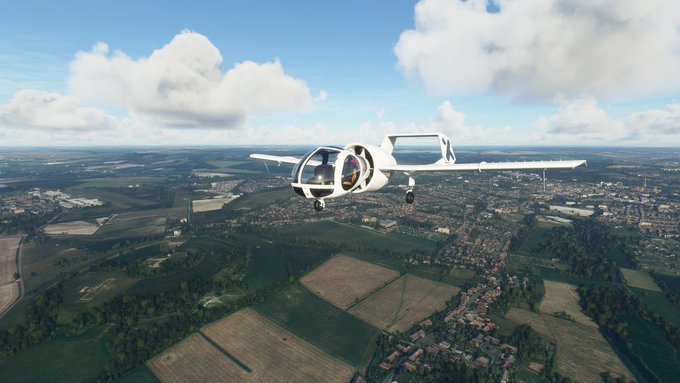
Until the reapportionment of seats by population in the 19th Century, seats like Old Sarum could be easily controlled by corruption, while up and coming cities like Manchester had barely any representation in Parliament.
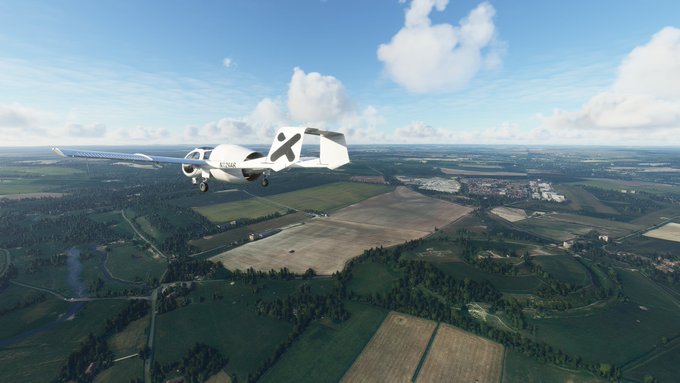
Looking out on Old Sarum, to the right, it does feel like you’re in a helicopter, not a plane.
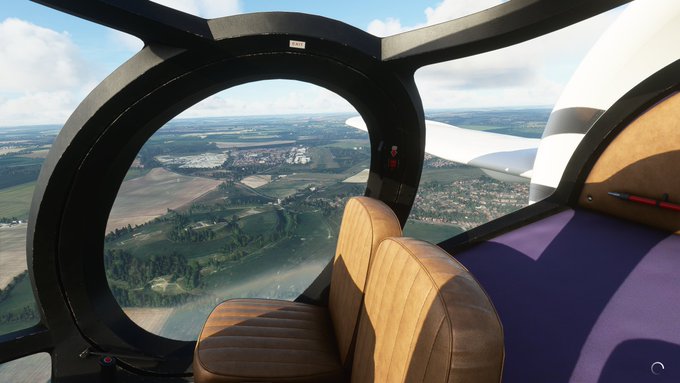
The Edgley Optica first flew in 1979, and at first things looked promising, with British law enforcement interested in using it for surveillance and traffic. The plane can loiter around 70 knots for up to 8 hours, and is relatively quiet, making it ideal for such roles.
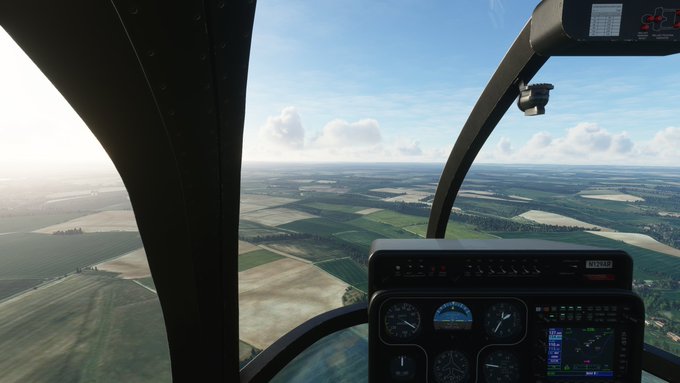
But in 1985, a local police department had a crash, killing the pilot and a photographer. Although the accident was attributed to pilot error (too steep a bank, causing it to stall), the project itself came to a stall.
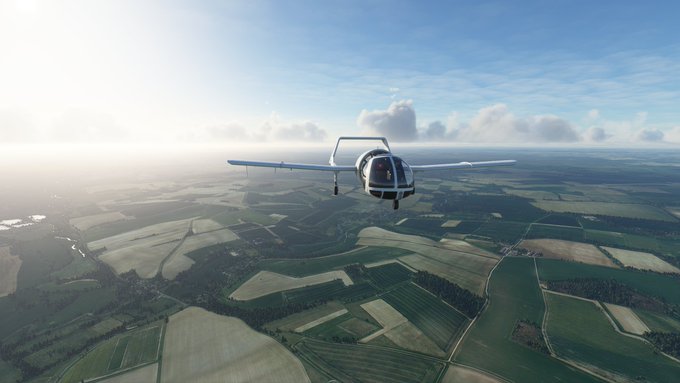
Only 22 Opticas were built, and 10 of them were destroyed in a fire. The company went bankrupt, and went through a string of new investors who tried to restart the project.
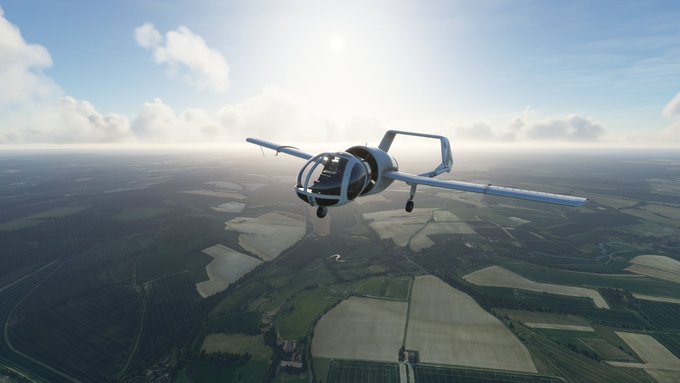
We’re north of Salibury now, along the River Avon, approaching Amesbury and keeping our eyes out for an even more famous ancient monument. (Yes, I know I left all my lights off on takeoff and I’m sorry about that).
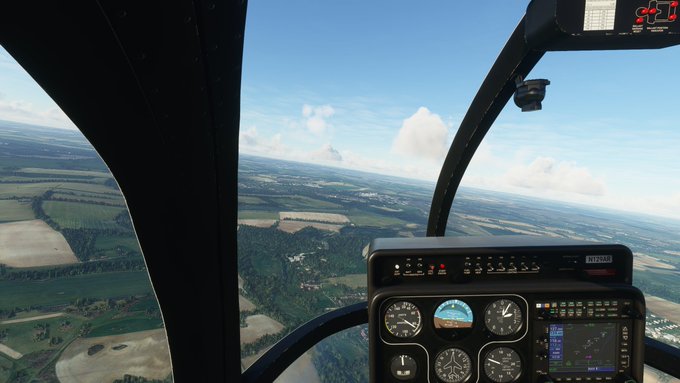
There it is: Stonehenge. A friend and I once tried to walk from Old Sarum to Stonehenge and it was longer than we thought. We ended up flagging down a bus on a country road, but we made it.
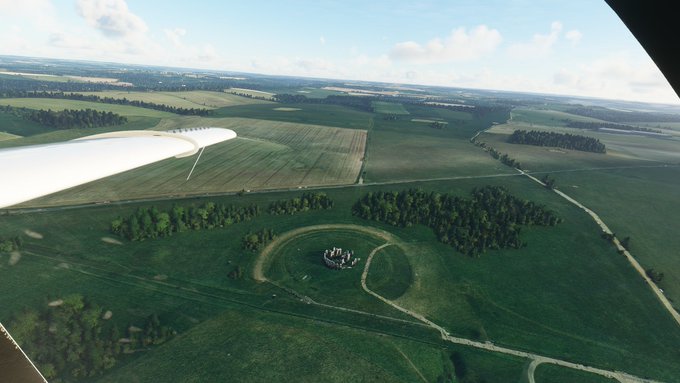
Now these steep turns over Stonehenge offer an awesome view, but I can see how the Optica crashed during such a turn.
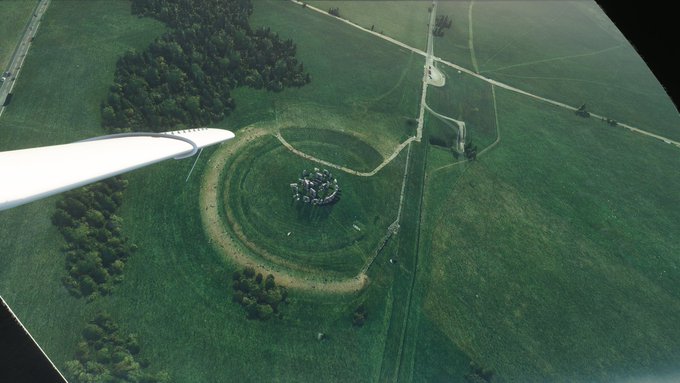
The loiter speed in 70 knots, and the stall speed with flaps up is 58. That doesn’t leave much room for error. You pitch up or throttle down just a bit too much, and that stall warning starts going off. You can adjust, but not if you’re distracted by sightseeing.
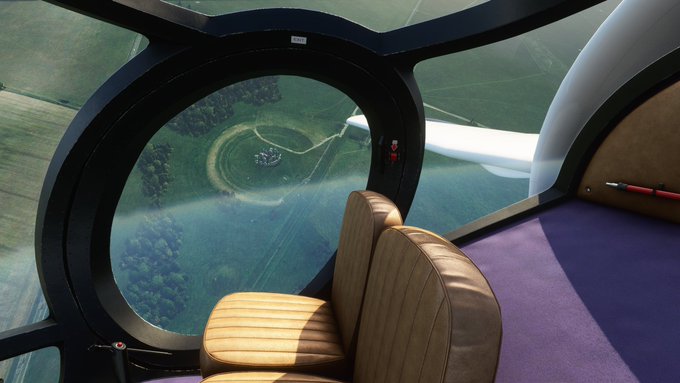
From what I could tell, the Optica performed best when it was slow, straight, and level. You have to take your time with gentle turns. That makes it great from some helicopter roles (surveillance, seaching) but tricky for others (photography, sightseeing).
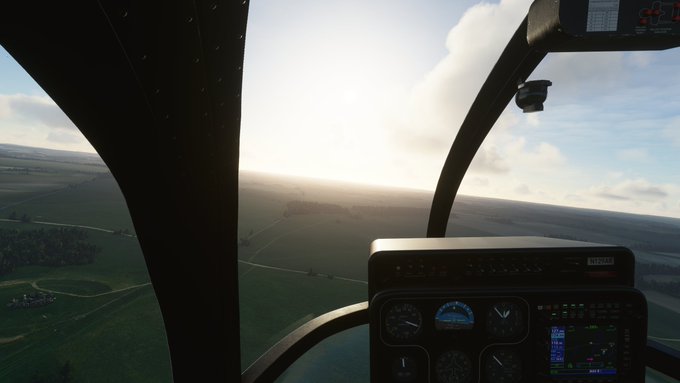
And when I came in for a landing, at the nearby RAF base at Boscombe Down, it felt more like hovering in on a helicopter than the straight and steady approach of an airplane. It didn’t help that I had a crosswind.
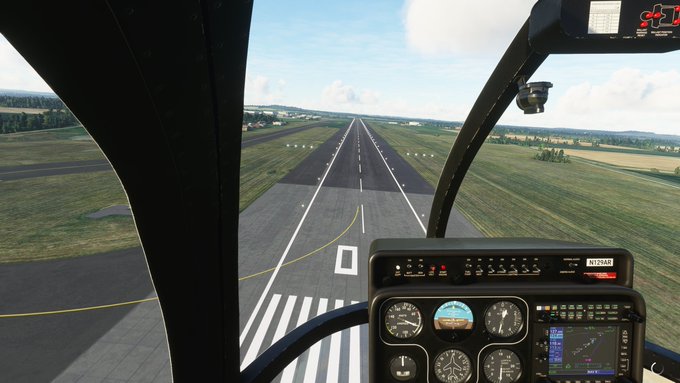
Apparently a new set of investors have bought the rights to the Optica, brought back John Edgley, and have been trying to relaunch the aircraft in the past few years.
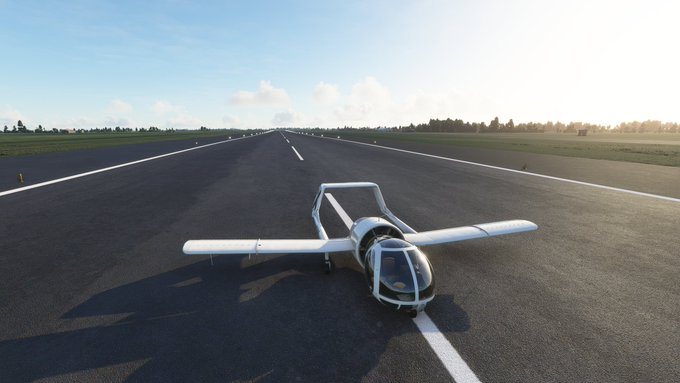
Perhaps they’re clever to get it onto MSFS, where a broader audience can give it a whirl and see what this dragonfly-looking aircraft is all about.
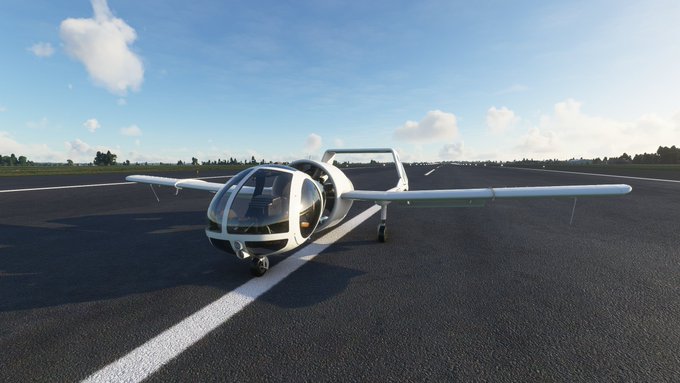
Here is an interview with John Edgley:
And here is the new company’s website: http://optica.co.uk/index2.html
Leave a Reply